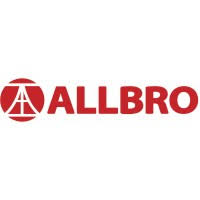
Renewable Energy Sustainability
Renewable Energy Sustainability is a diverse field encompassing various technologies and methods for harnessing natural resources to generate power.
- Here are several categories and subcategories of Renewable Energy Sustainability within the cleantech that you can use as a Features when you are Add Listing in Global Cleantech Directory Platform. Renewable Energy Sustainability subcategories help people’s searching in the Global Cleantech Directory Platform by categorizing and finding the relevant wide range of cleantech and approaches used for renewable energy, contributing to a sustainable and diversified energy portfolio.
1. Solar Energy:
- – Photovoltaic (PV) Systems: Solar panels that convert sunlight directly into electricity.
– Solar Thermal Energy: Systems that use sunlight to generate heat, which can be used directly or converted into electricity.
– Concentrated Solar Power (CSP): Technologies that use mirrors or lenses to concentrate sunlight onto a small area to produce high-temperature heat for electricity generation.
2. Wind Energy:
- – Onshore Wind: Wind turbines located on land that convert wind energy into electricity.
– Offshore Wind: Wind turbines installed in bodies of water, typically on the continental shelf, that harness stronger and more consistent wind speeds.
– Small Wind Systems: Smaller turbines for individual homes or communities.
3. Hydropower:
- – Large aHydropower: Dams and large-scale water storage systems that generate electricity by releasing stored water through turbines.
– Small Hydropower: Small-scale hydropower plants, typically less than 10 MW, that can be used in remote areas or for local energy needs.
– Micro Hydropower: Very small-scale systems suitable for individual households or small communities.
– Pumped Storage Hydropower: Systems that store energy by pumping water uphill to a reservoir during low demand periods and releasing it to generate electricity during high demand periods.
4. Biomass Energy:
- – Biogas: Production of methane gas from organic materials through anaerobic digestion.
– Biofuels: Liquid fuels derived from biological materials, such as ethanol from corn or sugarcane and biodiesel from vegetable oils or animal fats.
– Biomass Power Plants: Facilities that burn organic materials (wood, agricultural residues, etc.) to produce heat or electricity.
– Waste-to-Energy: Conversion of municipal solid waste into energy through combustion or other processes.
5. Geothermal Energy:
- – Geothermal Power Plants: Facilities that generate electricity by tapping into heat from the Earth’s interior.
– Geothermal Heating and Cooling: Use of ground source heat pumps to regulate building temperatures by leveraging the consistent temperatures found just below the Earth’s surface.
– Enhanced Geothermal Systems (EGS): Technologies that enhance or create geothermal resources through hydraulic stimulation.
6. Ocean Energy:
- – Tidal Energy: Harnessing the energy from tidal currents and the rise and fall of sea levels.
– Wave Energy: Converting energy from surface waves into electricity.
– Ocean Thermal Energy Conversion (OTEC): Using temperature differences between surface water and deeper water to generate electricity.
– Salinity Gradient Power: Exploiting the energy potential between fresh water and salt water, such as at river mouths.
7. Hydrogen Energy:
- – Green Hydrogen: Hydrogen produced using renewable energy sources through processes like electrolysis.
– Hydrogen Fuel Cells: Devices that convert hydrogen and oxygen into electricity, with water as a byproduct.
8. Distributed Renewable Energy Systems:
- – Community Solar: Solar power projects shared by multiple community members.
– Home Renewable Energy Systems: Small-scale systems like rooftop solar panels and small wind turbines for individual homes.
– Microgrids: Localized grids that can operate independently from the traditional grid, often incorporating multiple renewable energy sources.
9. Hybrid Renewable Energy Systems:
- – Solar-Wind Hybrids: Combining solar panels and wind turbines to increase reliability and efficiency.
– Renewable Energy with Storage: Integrating renewable energy sources with battery storage to provide consistent power supply.

Empowering a Sustainable Future
Innovate, Connect, Transform
Recommended Tags
Renewable Energy Sustainability
- Here are some commonly used tags in the Renewable Energy Sustainability within the cleantech that you can use when you are Add Listing in Global Cleantech Directory Platform. Renewable Energy Sustainability tags help organize and locate content related to advancements, practices, and discussions in the field of renewable energy sustainability when people are searching in the Global Cleantech Directory Platform.
General Renewable Energy
- Renewable Energy
Sustainable Energy
Green Energy
Clean Energy
Alternative Energy
Solar Energy
- Solar Power
Solar Panels
Photovoltaics
Solar Thermal
Solar Energy Storage
Wind Energy
- Wind Power
Wind Turbines
Offshore Wind
Onshore Wind
Wind Farms
Hydropower
- Hydroelectric Power
Hydropower Dams
Small Hydropower
Micro Hydropower
Run River Hydropower
Biomass Energy
- Biomass Power
Bioenergy
Biogas
Biofuel
Waste-to-Energy
Geothermal Energy
- Geothermal Power
Geothermal Heat Pumps
Enhanced Geothermal Systems
Geothermal Heating
Hot Dry Rock
Ocean Energy
- Tidal Power
Wave Energy
Ocean Thermal Energy Conversion
OTEC
Marine Energy
Offshore Energy
Energy Storage
- Battery Storage
Grid Storage
Energy Storage Systems
Renewable Energy Storage
Energy Storage Solutions
Policy and Regulation
- Renewable Energy Policy
Clean Energy Incentives
Renewable Energy Mandates
Green Energy Standards
Energy Transition
Technology and Innovation
- Clean Tech
Renewable Energy Technology
Energy Innovation
Smart Grid
Energy Efficiency
Environmental Impact
- Carbon Reduction
Climate Change Mitigation
Environmental Sustainability
Renewable Energy Benefits
Low Carbon Energy
Economic Impact
- Green Jobs
Renewable Energy Investment
Clean Energy Economy
Renewable Energy Market
Energy Transition Economics
Popular Q&A
Renewable Energy Sustainability
- Here are some popular questions and answers related to Renewable Energy Sustainability, highlighting common concerns and insights in the field.
Renewable energy comes from sources that are naturally replenished on a human timescale, such as solar, wind, hydro, geothermal, and biomass.
It reduces greenhouse gas emissions, decreases dependence on fossil fuels, and provides sustainable energy sources that can help combat climate change.
The main types include solar power, wind power, hydropower, geothermal energy, and biomass energy.
Solar panels convert sunlight into electricity using photovoltaic cells. Solar thermal systems use sunlight to heat water or air for residential and industrial uses.
Solar energy is abundant, renewable, reduces electricity bills, has low maintenance costs, and reduces carbon footprints.
Solar energy is intermittent (depends on sunlight), requires significant initial investment, and needs large areas for installation.
Wind turbines convert the kinetic energy from wind into mechanical power, which is then converted into electricity.
It is a clean and renewable source of energy, reduces greenhouse gas emissions, and can be installed on existing farms or ranches.
Wind energy can be inconsistent, turbines can be noisy, they can impact local wildlife (e.g., birds), and there can be aesthetic concerns.
Hydropower plants use flowing water to spin a turbine connected to a generator, producing electricity.
It is a reliable and efficient source of renewable energy, can provide large-scale power, and offers flexibility in meeting demand.
Hydropower can disrupt local ecosystems, displace communities, and its effectiveness can be impacted by droughts and changing water levels.
Geothermal plants tap into heat from the Earth’s interior by using steam or hot water from underground reservoirs to drive turbines that generate electricity.
It is a stable and reliable source of energy, has a small land footprint, and produces very low greenhouse gas emissions.
Geothermal energy is location-specific, can have high initial costs, and there are concerns about the release of harmful gases from underground.
Biomass energy is derived from organic materials such as plant and animal waste, which are burned or converted into biofuels
It helps manage waste, is renewable, can reduce greenhouse gas emissions compared to fossil fuels, and provides a use for agricultural by-products.
It can compete with food production, may result in deforestation, and burning biomass can produce pollutants if not managed properly.
Emerging technologies include advanced biofuels, tidal and wave energy, enhanced geothermal systems, and improvements in energy storage systems like batteries.
They store excess energy produced during peak generation times and release it during periods of high demand or low production, helping to stabilize the grid.
Government policies such as subsidies, tax incentives, and renewable energy mandates can help promote the adoption and development of renewable energy technologies.
- These questions address the intersection of Renewable Energy Sustainability and cleantech, highlighting how cleantech can be leveraged to create more sustainable and efficient environments.
- Explore the link to learn about Renewable Energy Sustainability category and discover related insights from our Annual EarthDay Conference Speech
Renewable Energy Sustainability Listings
Allbro Industries(Pty) Ltd
RBA Ready Boards are configurable! Choose your breakers, add a bulkhead, and order one with rails. A
Terra Energy Ltd
Industry experts in oil field engineering, manpower supply, construction management and procurement




